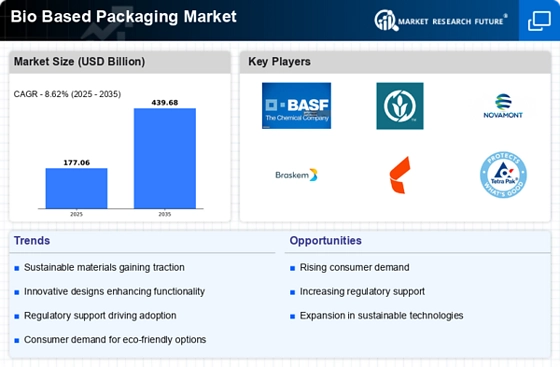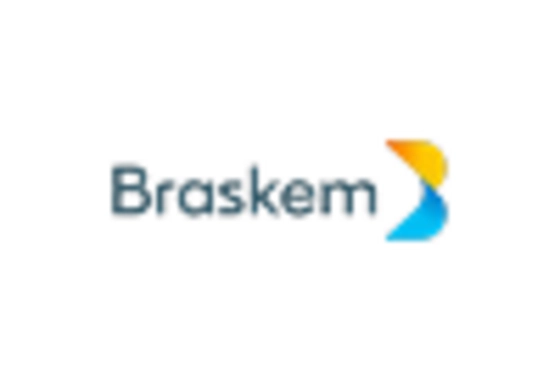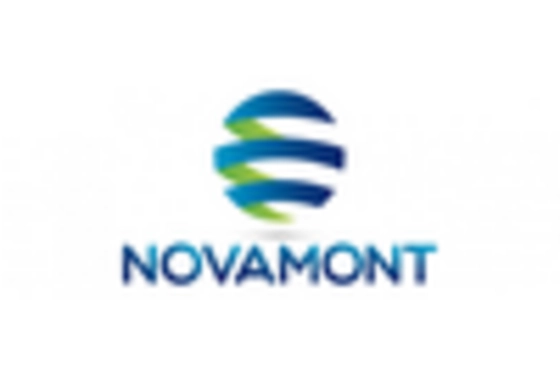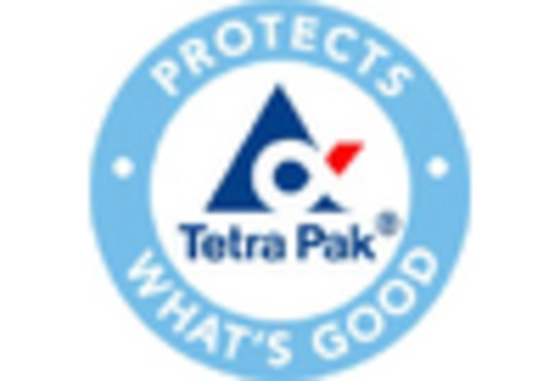Corporate Sustainability Goals
The commitment of corporations to sustainability is driving the Bio Based Packaging Market forward. Many companies are setting ambitious sustainability goals, including reducing their carbon footprint and transitioning to renewable materials. This corporate responsibility is prompting businesses to explore bio-based packaging as a viable alternative to traditional materials. Industry expert's reveal that approximately 70% of major corporations have integrated sustainability into their core strategies, which includes the adoption of bio-based packaging solutions. This trend not only enhances brand reputation but also meets the growing expectations of environmentally conscious consumers. As corporations continue to prioritize sustainability, the demand for bio-based packaging is expected to rise, potentially leading to a market expansion of 18% in the coming years.
Rising Environmental Awareness
The increasing awareness regarding environmental issues among consumers appears to be a pivotal driver for the Bio Based Packaging Market. As individuals become more conscious of their ecological footprint, they tend to favor products that are sustainable and environmentally friendly. This shift in consumer behavior has led to a notable rise in demand for bio-based packaging solutions, which are perceived as less harmful to the environment compared to traditional plastic packaging. Market data indicates that the bio-based packaging segment is projected to grow at a compound annual growth rate of approximately 12% over the next five years, reflecting the urgency for sustainable alternatives. Companies are responding to this trend by innovating and expanding their product lines to include bio-based materials, thereby aligning with consumer preferences and enhancing their market position.
Government Initiatives and Regulations
Government initiatives aimed at promoting sustainability and reducing plastic waste are likely to bolster the Bio Based Packaging Market. Various countries have implemented regulations that encourage the use of biodegradable and compostable materials, thereby creating a favorable environment for bio-based packaging solutions. For instance, certain regions have introduced bans on single-use plastics, compelling manufacturers to seek alternative packaging options. This regulatory support not only drives demand but also incentivizes companies to invest in research and development of bio-based materials. As a result, the market is expected to witness a surge in innovation, with an estimated increase in bio-based packaging adoption by 15% in the next few years, as businesses strive to comply with evolving regulations.
Technological Advancements in Production
Technological advancements in the production of bio-based materials are emerging as a crucial driver for the Bio Based Packaging Market. Innovations in processing techniques and material science have led to the development of more efficient and cost-effective bio-based packaging solutions. For example, advancements in fermentation technology and polymer synthesis have enabled the creation of high-performance bioplastics that can compete with conventional plastics in terms of durability and functionality. Market analysis suggests that the introduction of these technologies could potentially reduce production costs by up to 20%, making bio-based packaging more accessible to a wider range of industries. Consequently, this trend is likely to accelerate the adoption of bio-based packaging solutions across various sectors, including food and beverage, cosmetics, and consumer goods.
Consumer Preference for Healthier Options
The growing consumer preference for healthier and safer packaging options is influencing the Bio Based Packaging Market. As consumers become more health-conscious, they are increasingly scrutinizing the materials used in packaging, particularly in food and beverage sectors. Bio-based packaging, which is often perceived as free from harmful chemicals and additives, is gaining traction among health-conscious consumers. This trend is reflected in market data, which indicates that products packaged in bio-based materials are experiencing a sales increase of approximately 10% annually. Companies are recognizing this shift and are actively reformulating their packaging strategies to incorporate bio-based materials, thereby appealing to a demographic that prioritizes health and sustainability.

















Leave a Comment